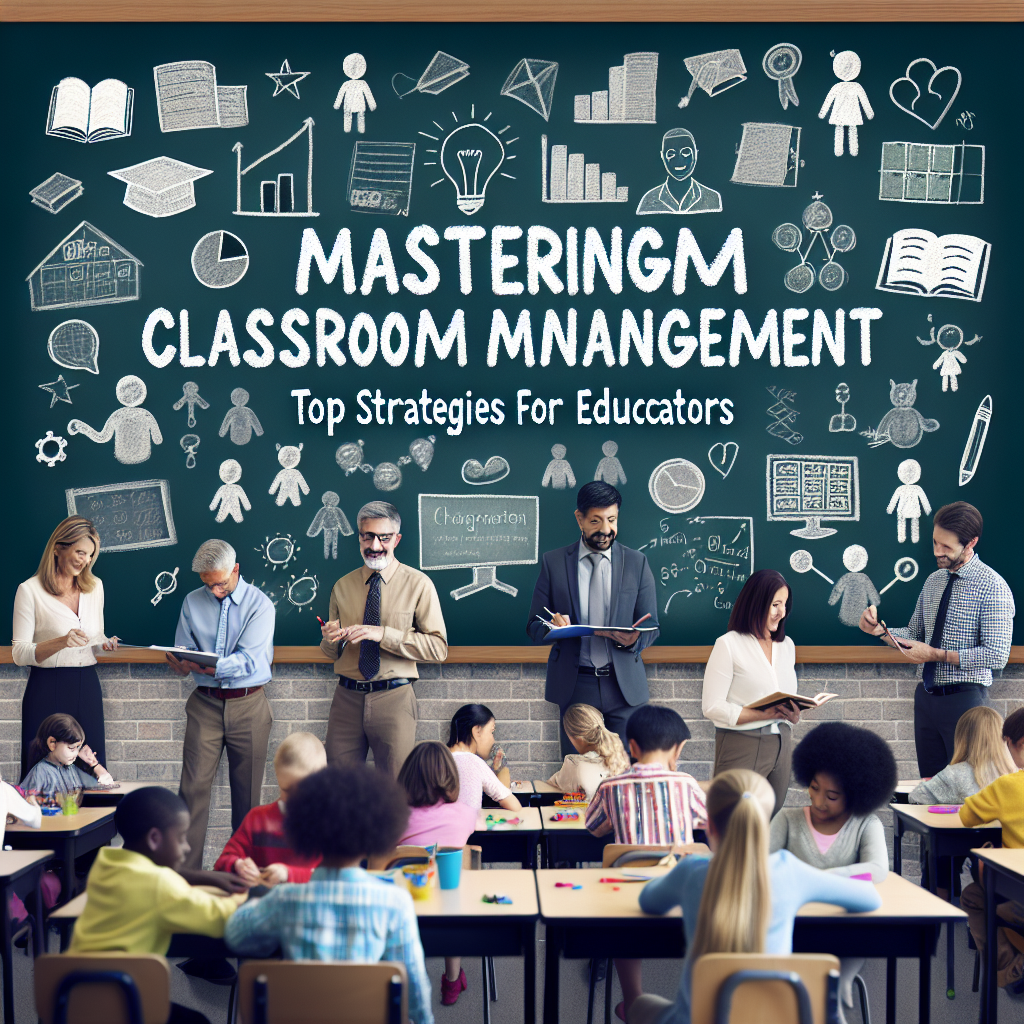
Introduction
In the ever-evolving landscape of education, mastering classroom management is not just an asset but a necessity. It lays the groundwork for a productive learning environment where students feel safe, respected, and engaged. Today, educators face not only the challenge of delivering curriculum but also managing diverse classrooms filled with varying personalities, aptitudes, and social dynamics. In this comprehensive guide, we’ll explore "Mastering Classroom Management: Top Strategies for Educators," equipping you with innovative techniques that will transform your teaching experience and enhance student outcomes.
The Importance of Classroom Management
Effective classroom management is crucial for fostering an environment where students can flourish. Research indicates that effective classroom management not only reduces disruptive behavior but also significantly enhances academic performance (Emmer & Evertson, 2013). Thus, educators who master these strategies will inevitably lead their students to achieve their fullest potential.
Key Strategies for Mastering Classroom Management
1. Establish Clear Expectations
Case Study: At Maplewood High School, Ms. Johnson, a seasoned educator, began her semester by collaboratively setting classroom expectations with her students. This approach fostered ownership and accountability, leading to a dramatic 30% reduction in behavioral issues compared to previous years.
Why It Works:
When expectations are articulated and understood, students are less likely to misbehave. Utilize visual aids, posters, and classroom discussions to ensure students comprehend what is expected of them.
Action Step:
Create a “class contract” and have each student sign it, reinforcing their commitment to the agreed-upon norms.
2. Build Relationships
Case Study: In a primary school in Chicago, Mr. Lee spent the first month of school conducting activities that helped him and his students get to know each other. As a result, he noticed not only improved behavior but also increased engagement during lessons.
Why It Works:
Establishing solid student-teacher relationships leads to mutual respect, which minimizes disruptions and increases students’ willingness to participate.
Action Step:
Implement daily check-ins where students can express their feelings about school. Use this information to tailor lessons to their emotional and academic needs.
3. Create an Engaging Learning Environment
Case Study: In a high-tech classroom at Riverside Academy, Ms. Patel incorporated interactive technology into her lessons. By using gamification and visual learning tools, she engaged students and decreased off-task behavior.
Why It Works:
Engaged students are less likely to misbehave. An environment that is stimulating and varied keeps students’ attention focused on learning objectives.
Action Step:
Integrate various teaching methods—such as group projects, multimedia presentations, and hands-on activities—into your curriculum to captivate students’ interest.
4. Implement Consistent Routines
Case Study: At Sunset Middle School, Mr. Harris established a daily routine where students knew exactly what to expect each day. This predictability significantly reduced anxiety and discipline referrals.
Why It Works:
Consistent routines provide a framework that helps students understand their responsibilities and reduces uncertainty in the classroom.
Action Step:
Create a visual schedule that outlines your daily activities, allowing students to see their tasks at a glance.
| Strategy | Benefits |
|---|---|
| Clear Expectations | Reduces misbehavior; promotes accountability |
| Build Relationships | Fosters respect; enhances engagement |
| Engaging Environment | Keeps student interest high; minimizes distractions |
| Consistent Routines | Provides predictability; reduces anxiety |
5. Manage Transitions Smoothly
Case Study: During transition times, Ms. Thompson utilized timed music to signal when to switch activities. This kept her students focused and resulted in fewer disruptions.
Why It Works:
Effective transitions minimize downtime, which, in turn, reduces opportunities for disruptive behavior.
Action Step:
Develop transition signals (like a timer or verbal cue) to prepare students for changes in activities and ensure fluidity in classroom flow.
6. Promote Positive Behavior
Case Study: At Crestview Academy, the implementation of a token economy system instilled a sense of achievement, allowing students to earn rewards for good behavior. This approach saw a 40% increase in positive behavior incidents.
Why It Works:
Recognizing and rewarding positive behavior encourages students to continue those actions, leading to a more harmonious classroom environment.
Action Step:
Create a points system where students can earn rewards for following classroom rules and expectations.
7. Use Effective Communication Skills
Case Study: Mr. Patel improved communication with his students about behavioral expectations, employing active listening. By addressing concerns openly, he reduced conflicts and fostered a more collaborative atmosphere.
Why It Works:
Effective communication fosters a sense of community and encourages students to express themselves respectfully.
Action Step:
Engage in regular discussions with your class about communication styles and the importance of respectful discourse in a collaborative learning environment.
8. Reflect and Adapt
Case Study: After noticing a spike in issues during afternoon classes, Ms. Gonzalez reflected on her teaching methods and adapted her curriculum to include more movement-based activities. This shift led to a marked decrease in behavioral disruptions.
Why It Works:
Reflective practice enables educators to identify what works and what needs tweaking, ensuring classroom strategies remain effective.
Action Step:
Set aside time weekly to assess your classroom management strategies. Solicit feedback from students to gain insight into their experiences.
Conclusion
Mastering classroom management is indeed a multifaceted endeavor, but the strategies outlined here will guide educators toward creating a thriving learning environment. As you navigate the complexities of teaching, remember that effective classroom management is not just about controlling behavior but nurturing a positive and dynamic educational experience. Implement these actionable strategies, reflect on their effectiveness, and adapt as necessary to meet your unique classroom challenges.
FAQs
What are some quick tips for new teachers struggling with classroom management?
- Start with clear expectations, build relationships with students, and utilize consistent routines to foster a positive environment.
How can I effectively handle disruptive behavior?
- Use proactive strategies like redirecting students’ attention, calmly addressing the behavior, and understanding the underlying causes of the disruption.
What role does student feedback play in classroom management?
- Student feedback is invaluable as it provides insight into what works and what needs improvement. Regularly solicit their opinions to adapt your strategies accordingly.
How can technology assist in classroom management?
- Tools like classroom management apps can help track behavior, streamline communication, and foster engagement through interactive lessons.
- What is the importance of cultural awareness in classroom management?
- Understanding the cultural backgrounds of your students allows you to tailor your approach, promoting inclusivity and respect, which is essential for managing diverse classrooms.
By focusing on "Mastering Classroom Management: Top Strategies for Educators," you are well-equipped to foster an environment that not only mitigates classroom challenges but also enhances the educational experience for both you and your students. Embrace these strategies and watch as your classroom transforms into a vibrant learning community!

















